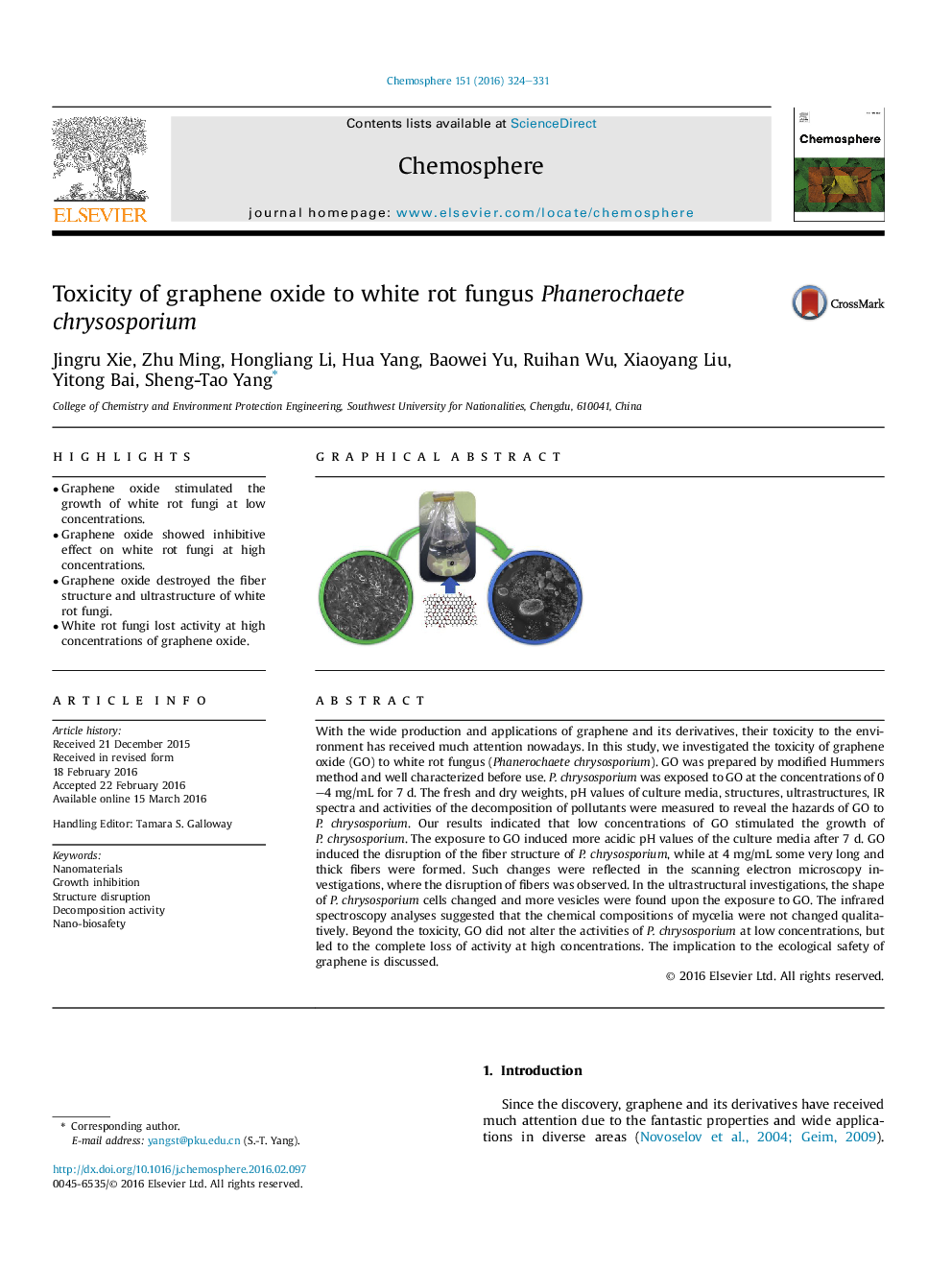| Article ID | Journal | Published Year | Pages | File Type |
|---|---|---|---|---|
| 4407781 | Chemosphere | 2016 | 8 Pages |
•Graphene oxide stimulated the growth of white rot fungi at low concentrations.•Graphene oxide showed inhibitive effect on white rot fungi at high concentrations.•Graphene oxide destroyed the fiber structure and ultrastructure of white rot fungi.•White rot fungi lost activity at high concentrations of graphene oxide.
With the wide production and applications of graphene and its derivatives, their toxicity to the environment has received much attention nowadays. In this study, we investigated the toxicity of graphene oxide (GO) to white rot fungus (Phanerochaete chrysosporium). GO was prepared by modified Hummers method and well characterized before use. P. chrysosporium was exposed to GO at the concentrations of 0–4 mg/mL for 7 d. The fresh and dry weights, pH values of culture media, structures, ultrastructures, IR spectra and activities of the decomposition of pollutants were measured to reveal the hazards of GO to P. chrysosporium. Our results indicated that low concentrations of GO stimulated the growth of P. chrysosporium. The exposure to GO induced more acidic pH values of the culture media after 7 d. GO induced the disruption of the fiber structure of P. chrysosporium, while at 4 mg/mL some very long and thick fibers were formed. Such changes were reflected in the scanning electron microscopy investigations, where the disruption of fibers was observed. In the ultrastructural investigations, the shape of P. chrysosporium cells changed and more vesicles were found upon the exposure to GO. The infrared spectroscopy analyses suggested that the chemical compositions of mycelia were not changed qualitatively. Beyond the toxicity, GO did not alter the activities of P. chrysosporium at low concentrations, but led to the complete loss of activity at high concentrations. The implication to the ecological safety of graphene is discussed.
Graphical abstractFigure optionsDownload full-size imageDownload as PowerPoint slide
